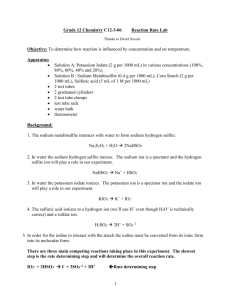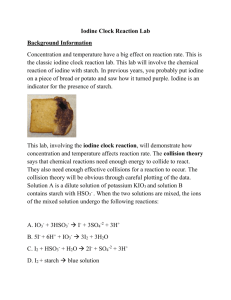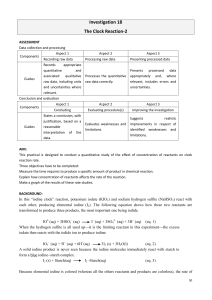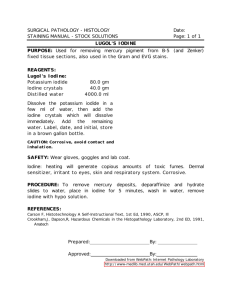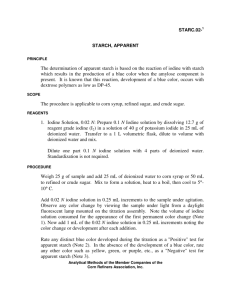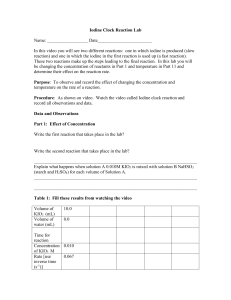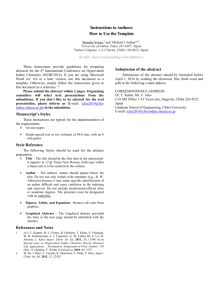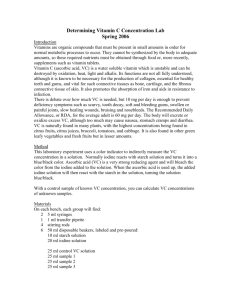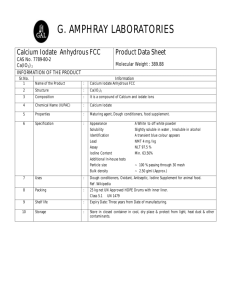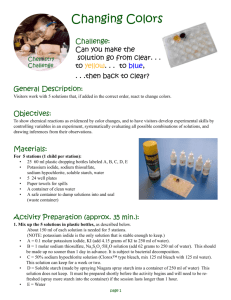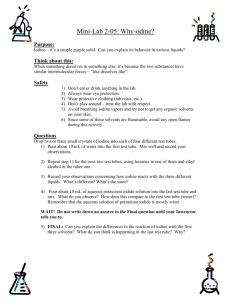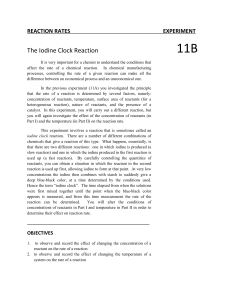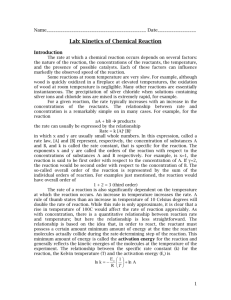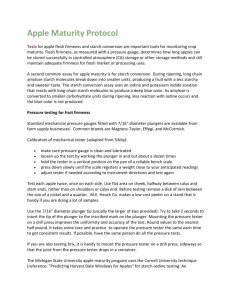Rates of Chemical Reactions
advertisement
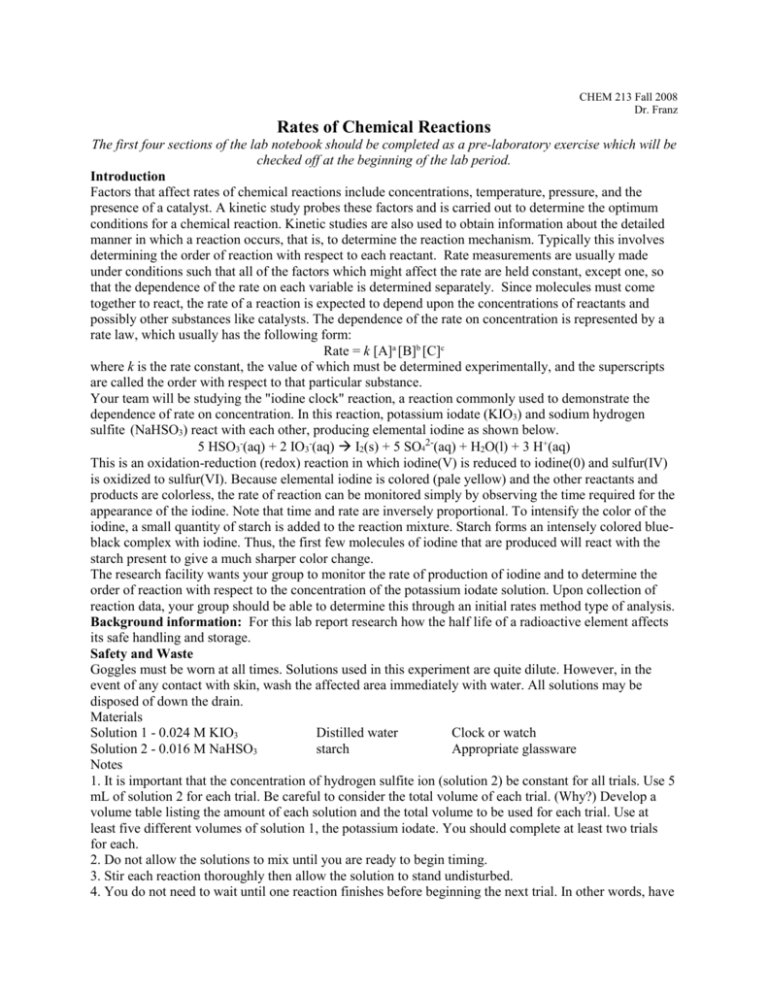
CHEM 213 Fall 2008 Dr. Franz Rates of Chemical Reactions The first four sections of the lab notebook should be completed as a pre-laboratory exercise which will be checked off at the beginning of the lab period. Introduction Factors that affect rates of chemical reactions include concentrations, temperature, pressure, and the presence of a catalyst. A kinetic study probes these factors and is carried out to determine the optimum conditions for a chemical reaction. Kinetic studies are also used to obtain information about the detailed manner in which a reaction occurs, that is, to determine the reaction mechanism. Typically this involves determining the order of reaction with respect to each reactant. Rate measurements are usually made under conditions such that all of the factors which might affect the rate are held constant, except one, so that the dependence of the rate on each variable is determined separately. Since molecules must come together to react, the rate of a reaction is expected to depend upon the concentrations of reactants and possibly other substances like catalysts. The dependence of the rate on concentration is represented by a rate law, which usually has the following form: Rate = k [A]a [B]b [C]c where k is the rate constant, the value of which must be determined experimentally, and the superscripts are called the order with respect to that particular substance. Your team will be studying the "iodine clock" reaction, a reaction commonly used to demonstrate the dependence of rate on concentration. In this reaction, potassium iodate (KIO3) and sodium hydrogen sulfite (NaHSO3) react with each other, producing elemental iodine as shown below. 5 HSO3-(aq) + 2 IO3-(aq) I2(s) + 5 SO42-(aq) + H2O(l) + 3 H+(aq) This is an oxidation-reduction (redox) reaction in which iodine(V) is reduced to iodine(0) and sulfur(IV) is oxidized to sulfur(VI). Because elemental iodine is colored (pale yellow) and the other reactants and products are colorless, the rate of reaction can be monitored simply by observing the time required for the appearance of the iodine. Note that time and rate are inversely proportional. To intensify the color of the iodine, a small quantity of starch is added to the reaction mixture. Starch forms an intensely colored blueblack complex with iodine. Thus, the first few molecules of iodine that are produced will react with the starch present to give a much sharper color change. The research facility wants your group to monitor the rate of production of iodine and to determine the order of reaction with respect to the concentration of the potassium iodate solution. Upon collection of reaction data, your group should be able to determine this through an initial rates method type of analysis. Background information: For this lab report research how the half life of a radioactive element affects its safe handling and storage. Safety and Waste Goggles must be worn at all times. Solutions used in this experiment are quite dilute. However, in the event of any contact with skin, wash the affected area immediately with water. All solutions may be disposed of down the drain. Materials Solution 1 - 0.024 M KIO3 Distilled water Clock or watch Solution 2 - 0.016 M NaHSO3 starch Appropriate glassware Notes 1. It is important that the concentration of hydrogen sulfite ion (solution 2) be constant for all trials. Use 5 mL of solution 2 for each trial. Be careful to consider the total volume of each trial. (Why?) Develop a volume table listing the amount of each solution and the total volume to be used for each trial. Use at least five different volumes of solution 1, the potassium iodate. You should complete at least two trials for each. 2. Do not allow the solutions to mix until you are ready to begin timing. 3. Stir each reaction thoroughly then allow the solution to stand undisturbed. 4. You do not need to wait until one reaction finishes before beginning the next trial. In other words, have multiple reactions occurring simultaneously. 5. Record all time data directly into your notebook. Report Your notebook should include all sections described in the "Introduction to Lab" document. In your report include the following: 3 • Graph average time vs. [IO3 ]. What conclusion, if any, does this graph imply? 3 • Graph 1/average time vs. [IO3 ]. What conclusion, if any, does this graph imply? • What is the order of reaction with respect to the concentration of the potassium iodate solution? • Why does the total solution volume need to be constant for all trials? • What role does temperature play in this experiment? Is it important that the temperature be constant for all trials? • How would you modify the procedure to determine the reaction order with respect to the hydrogen sulfite ion concentration?



